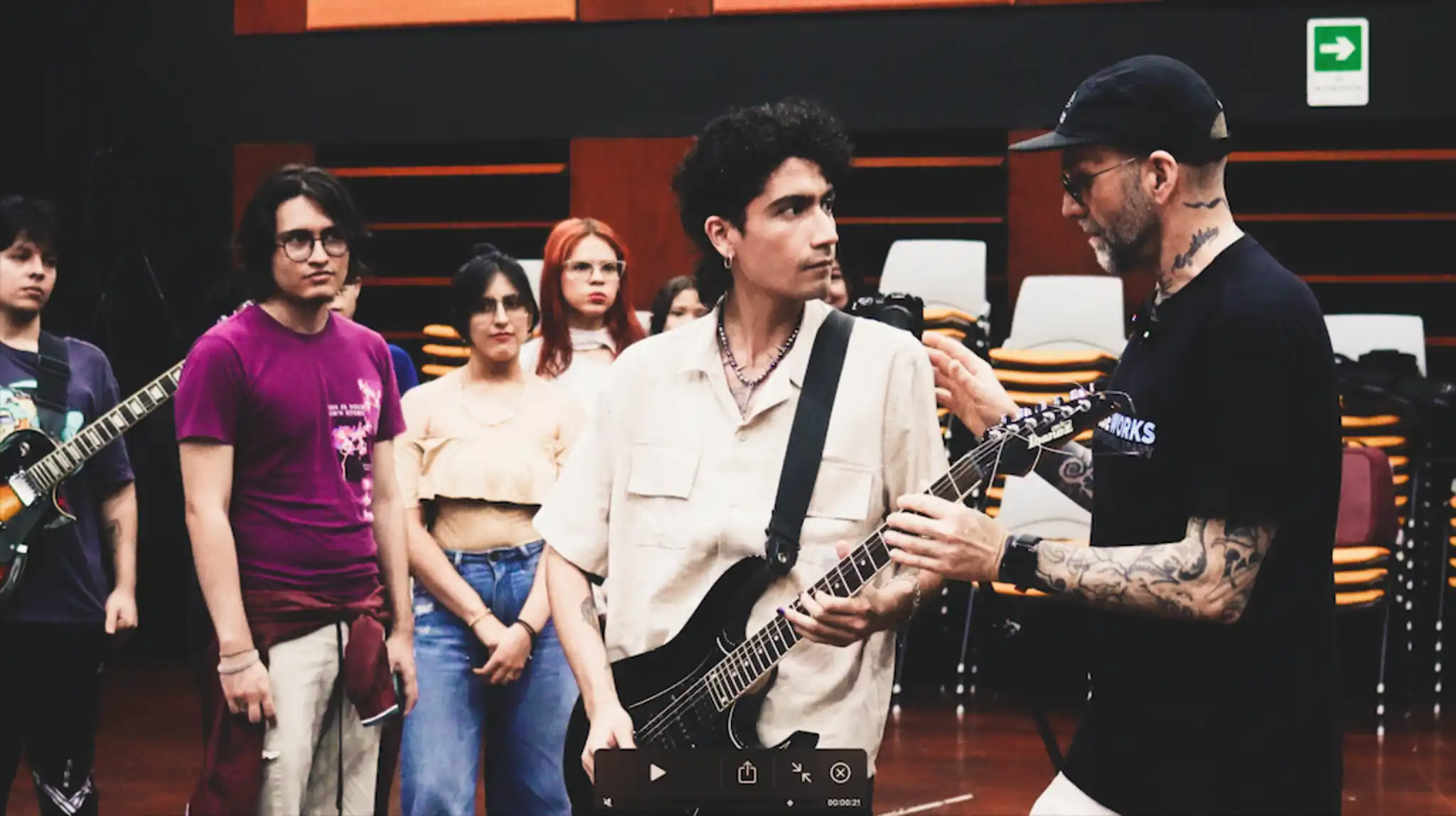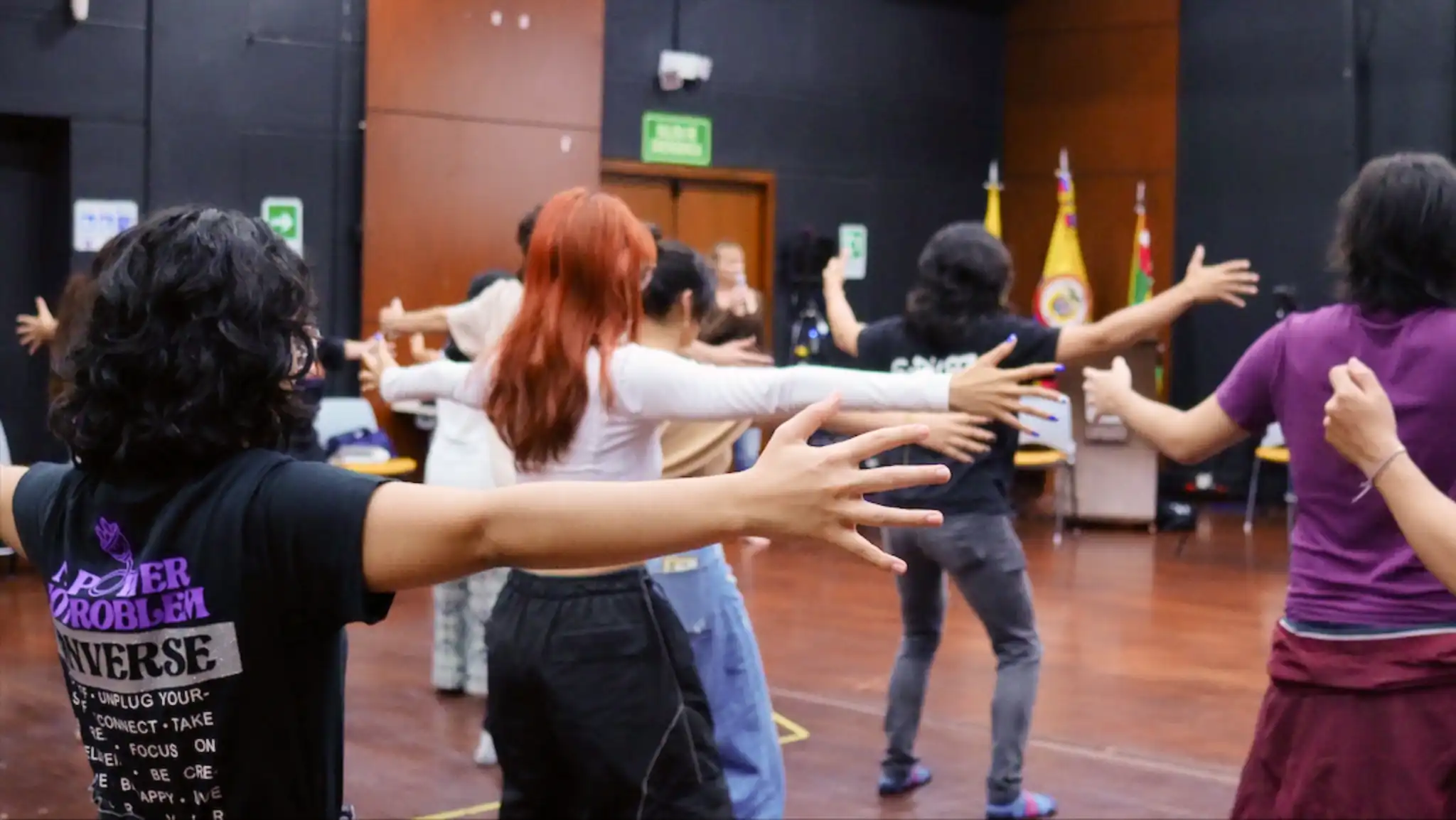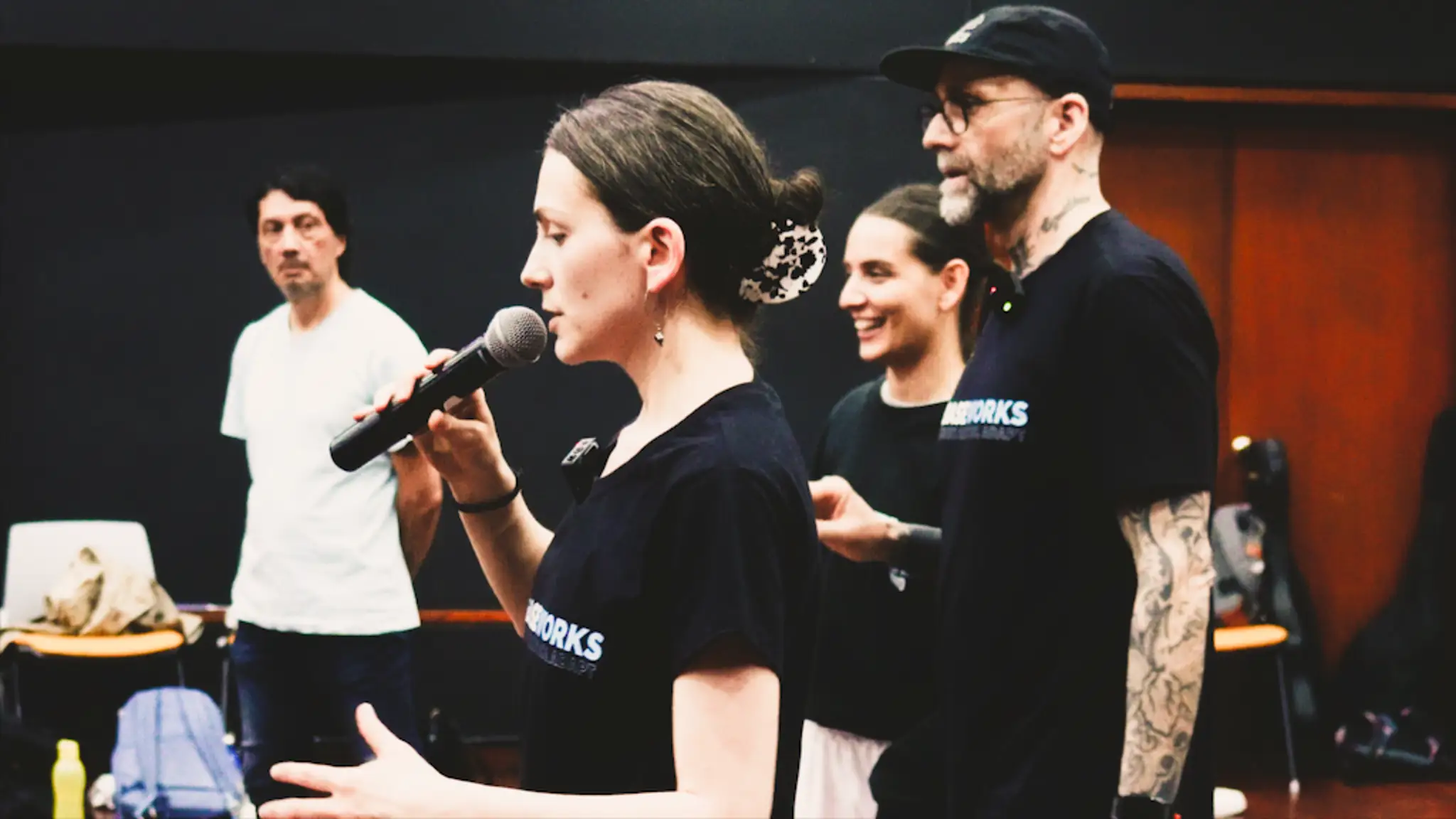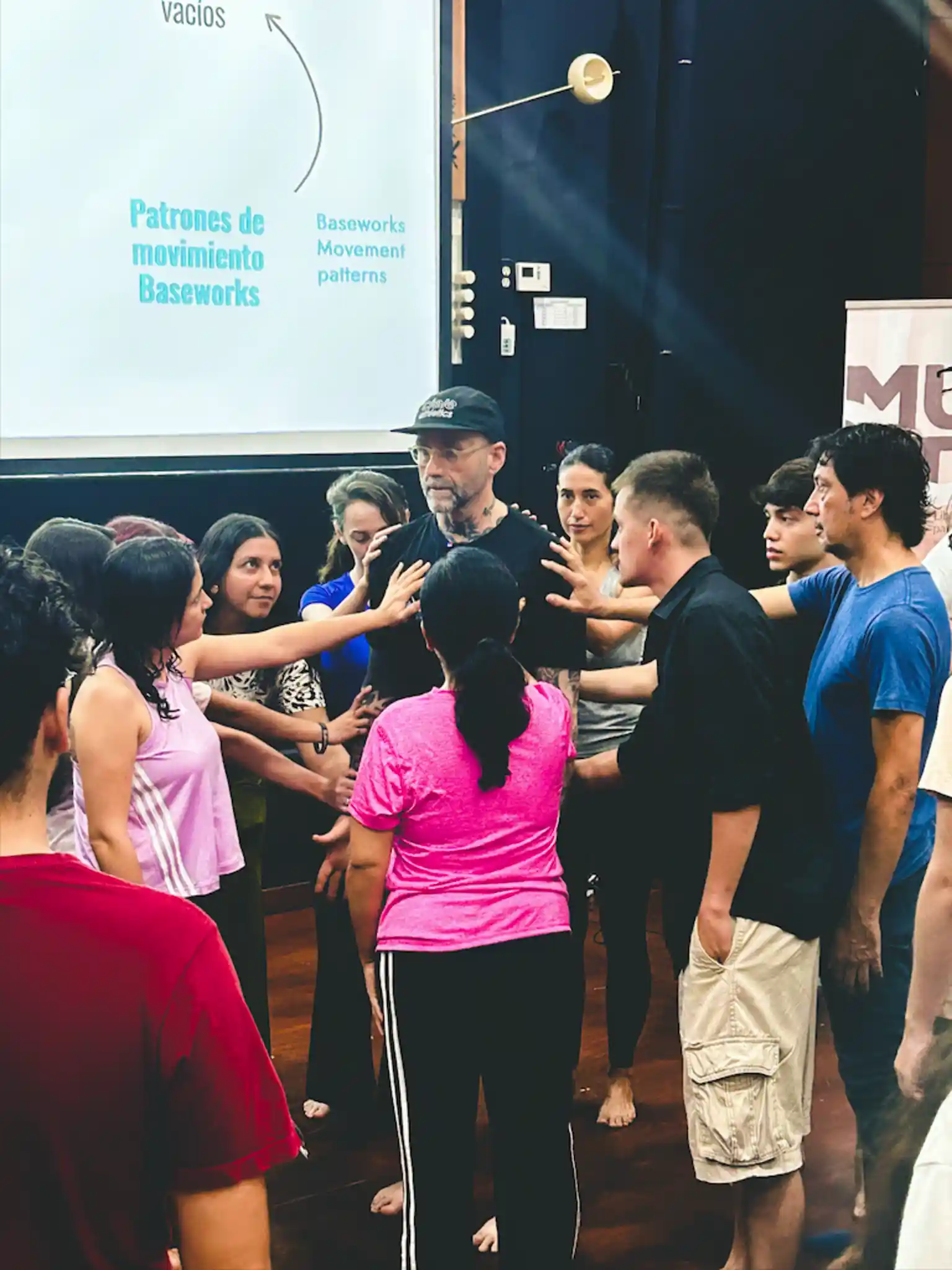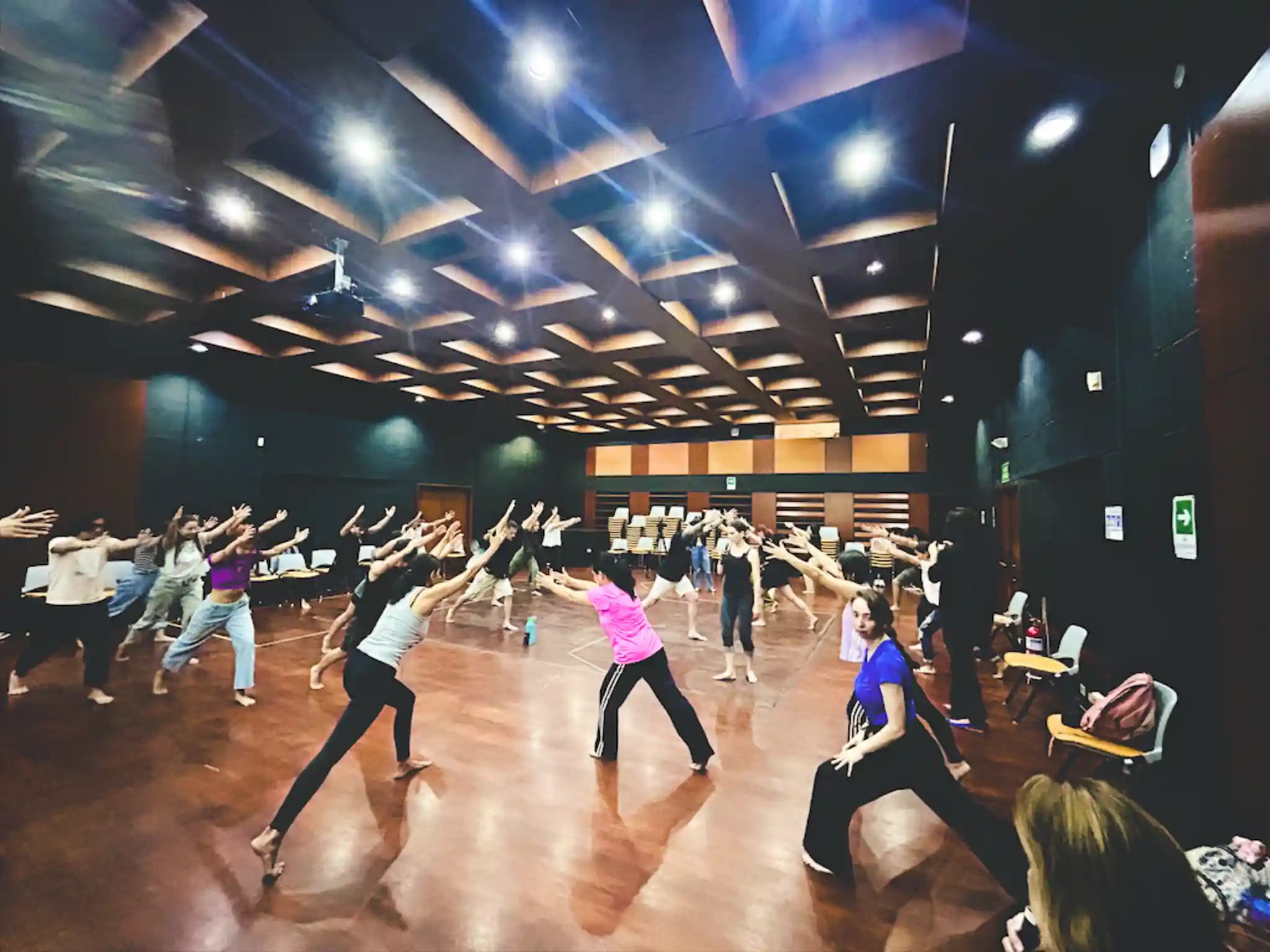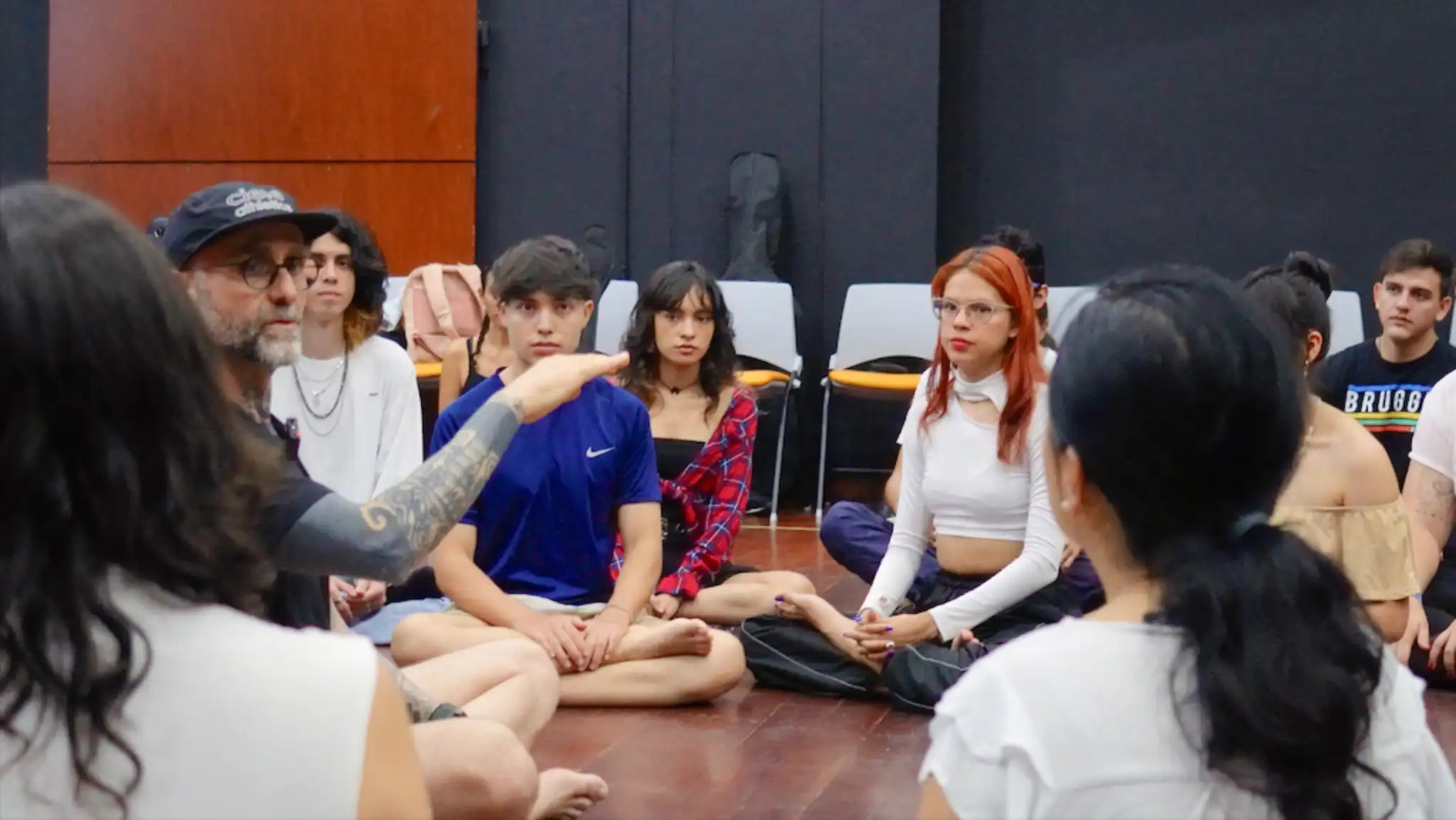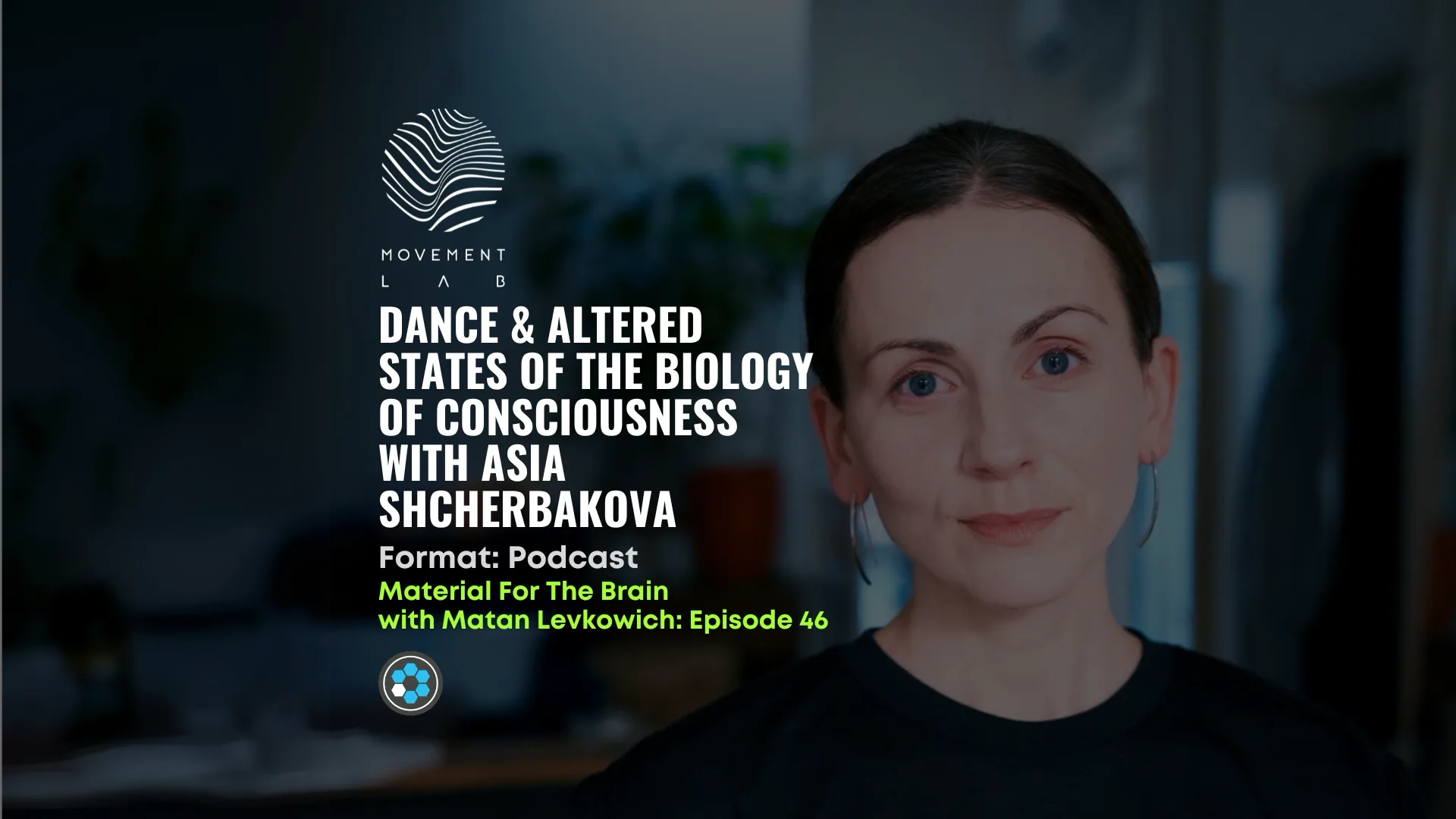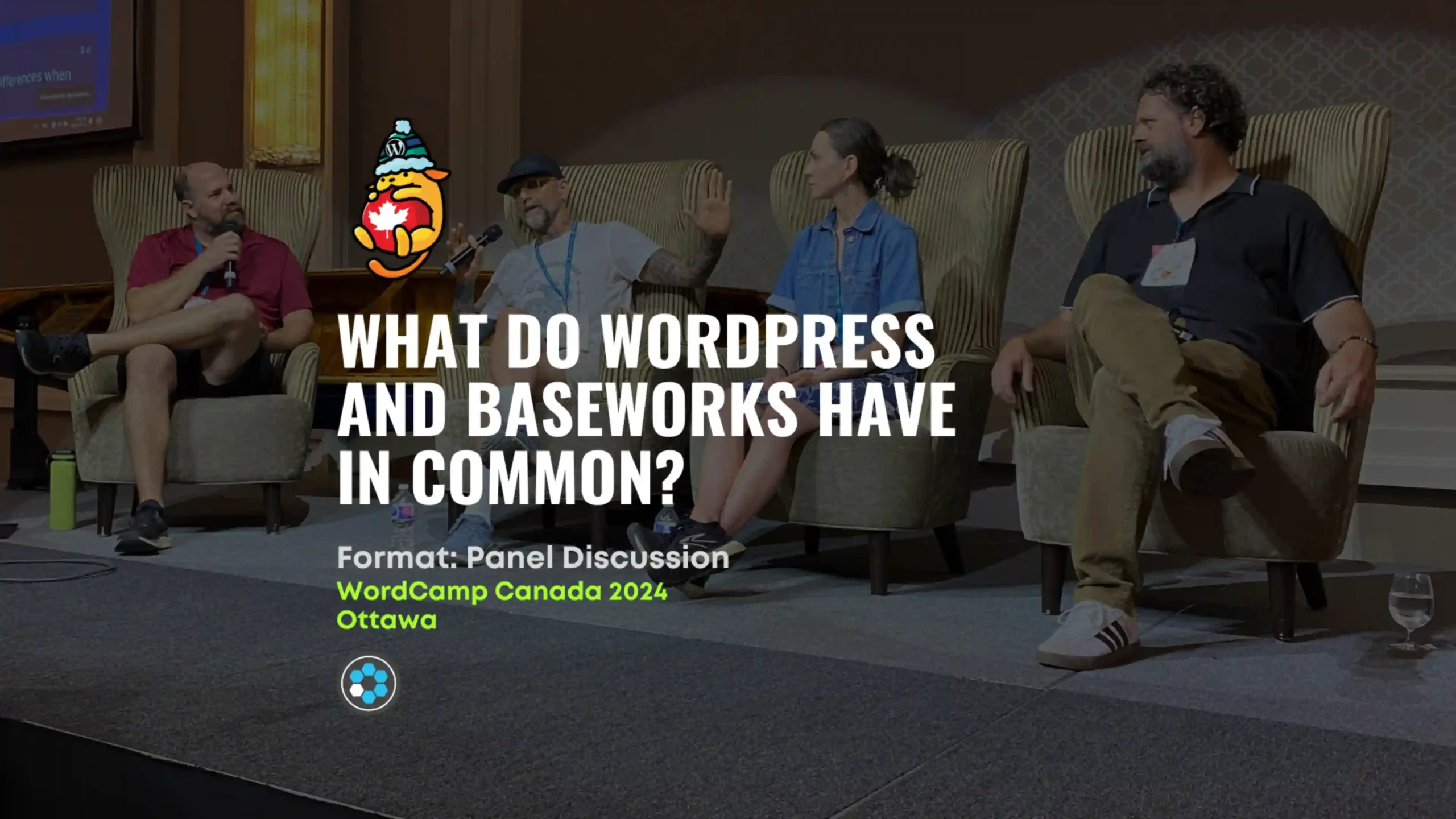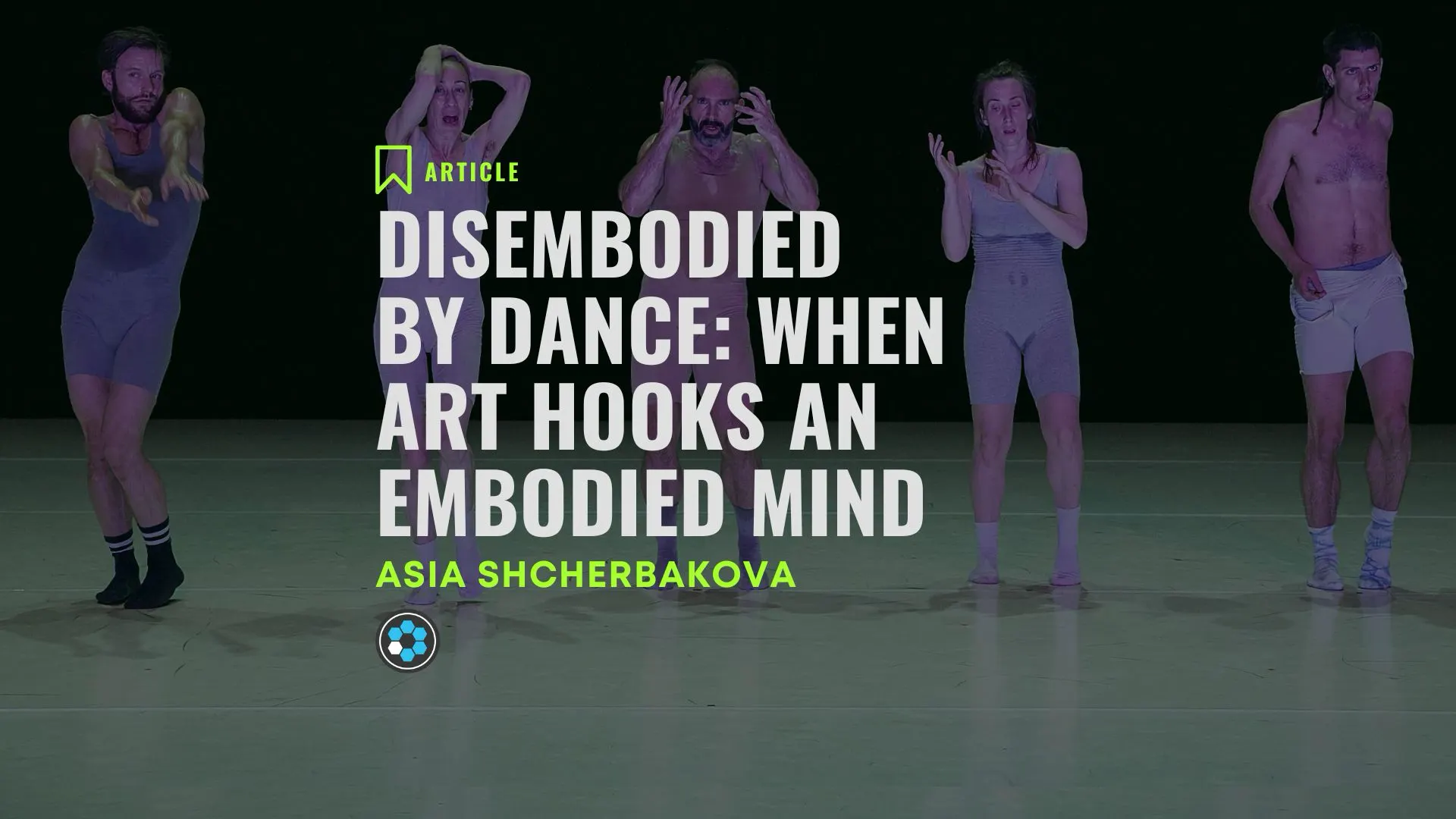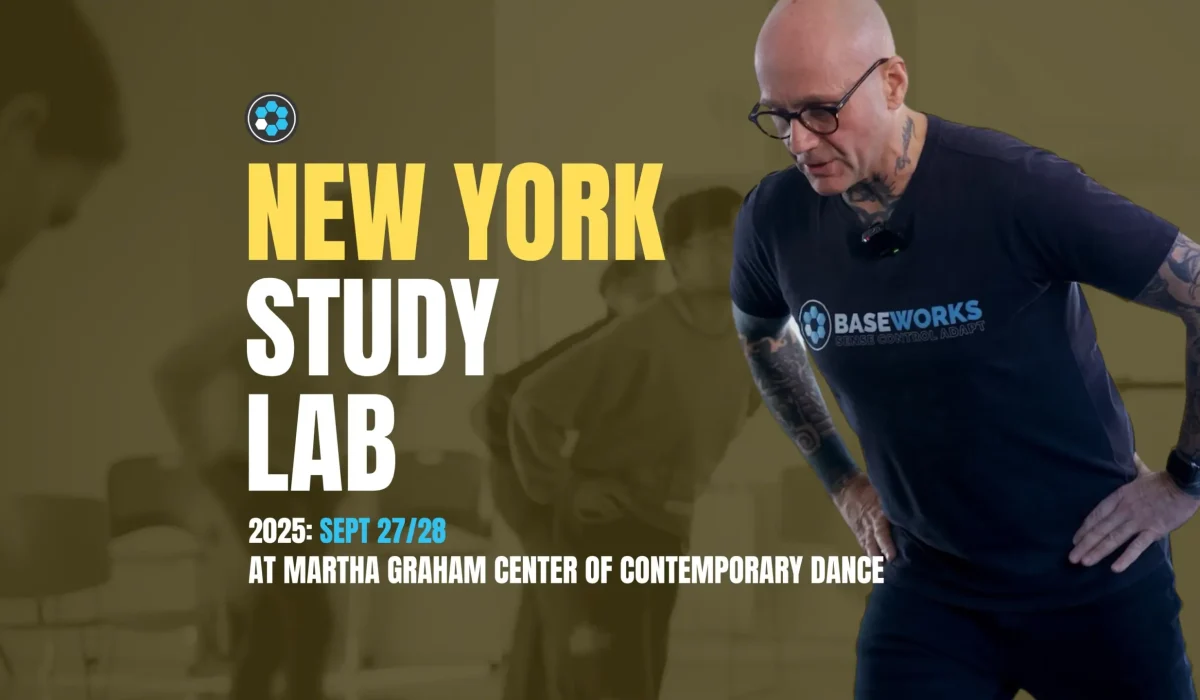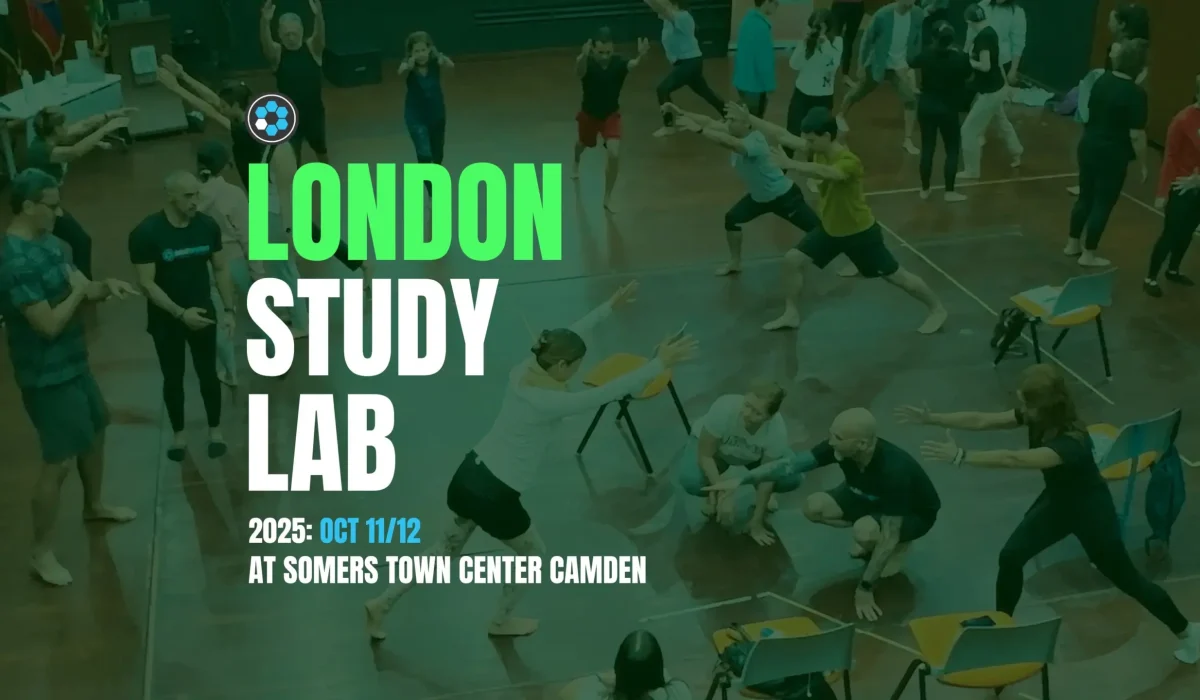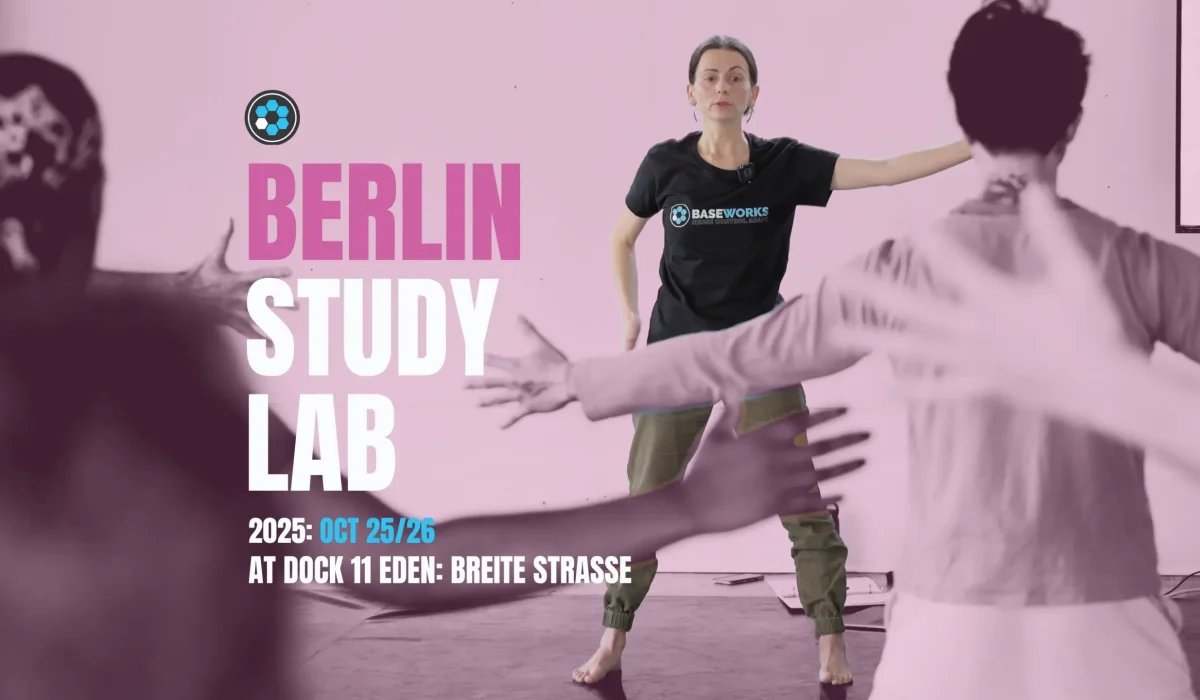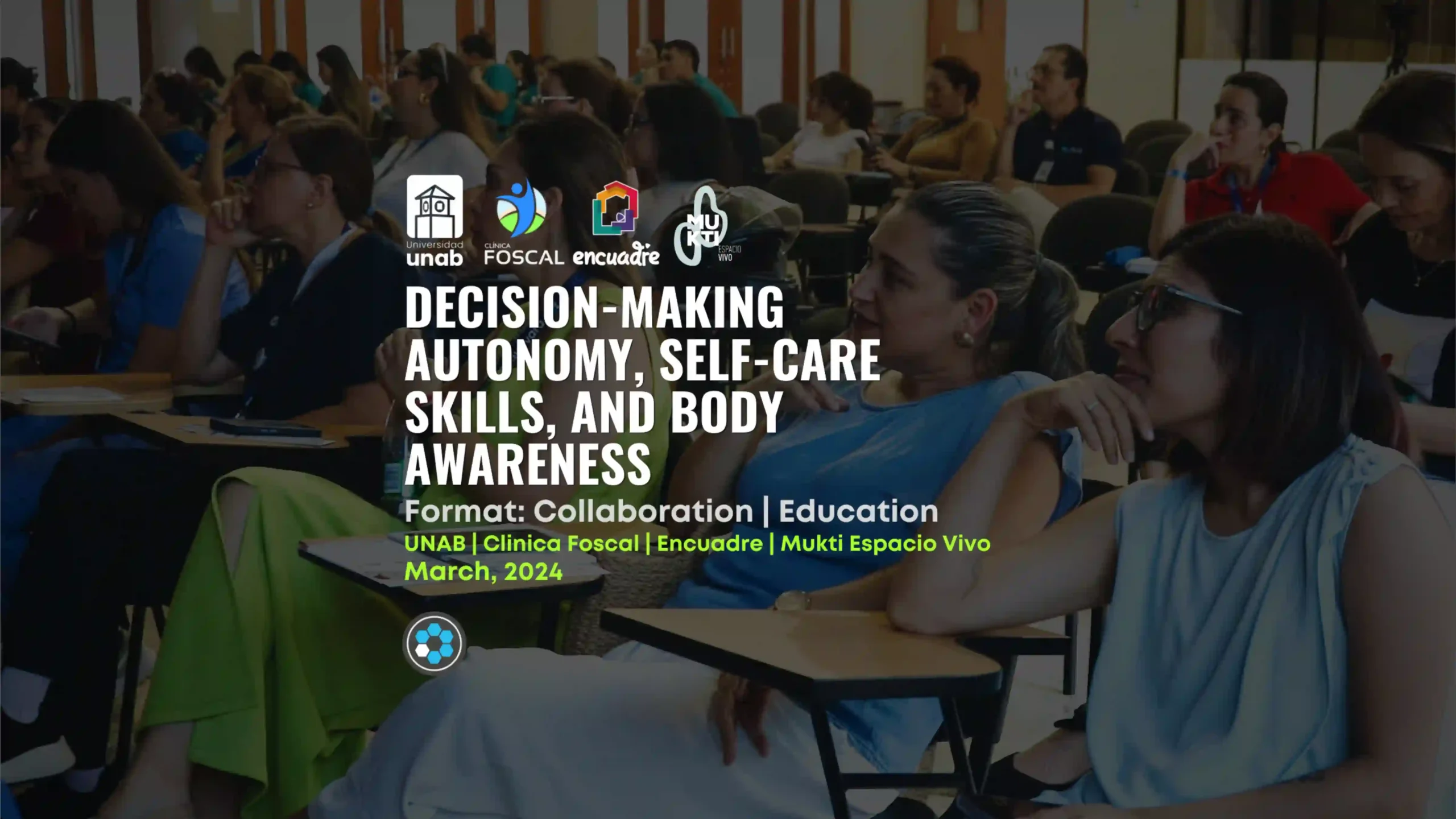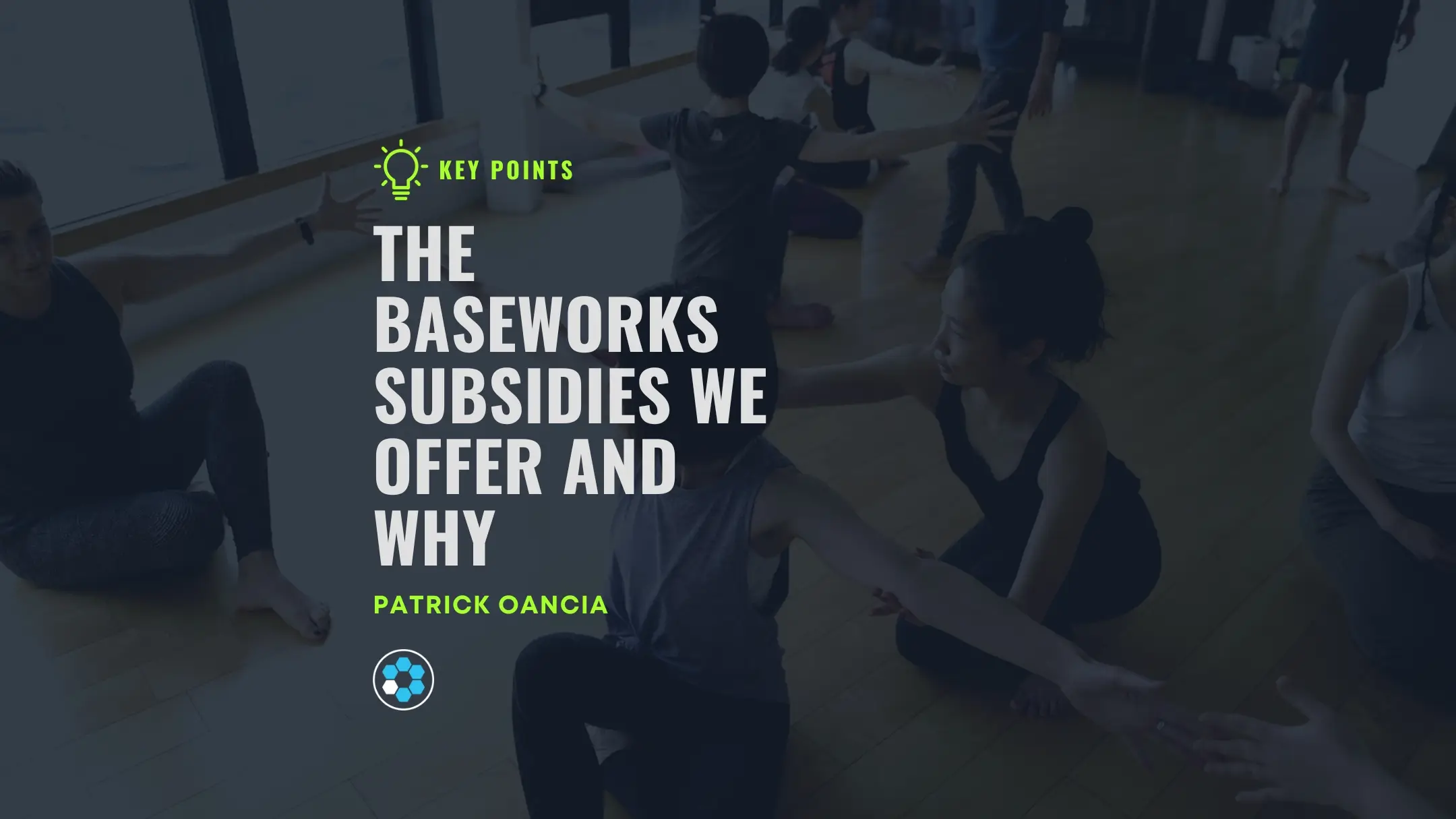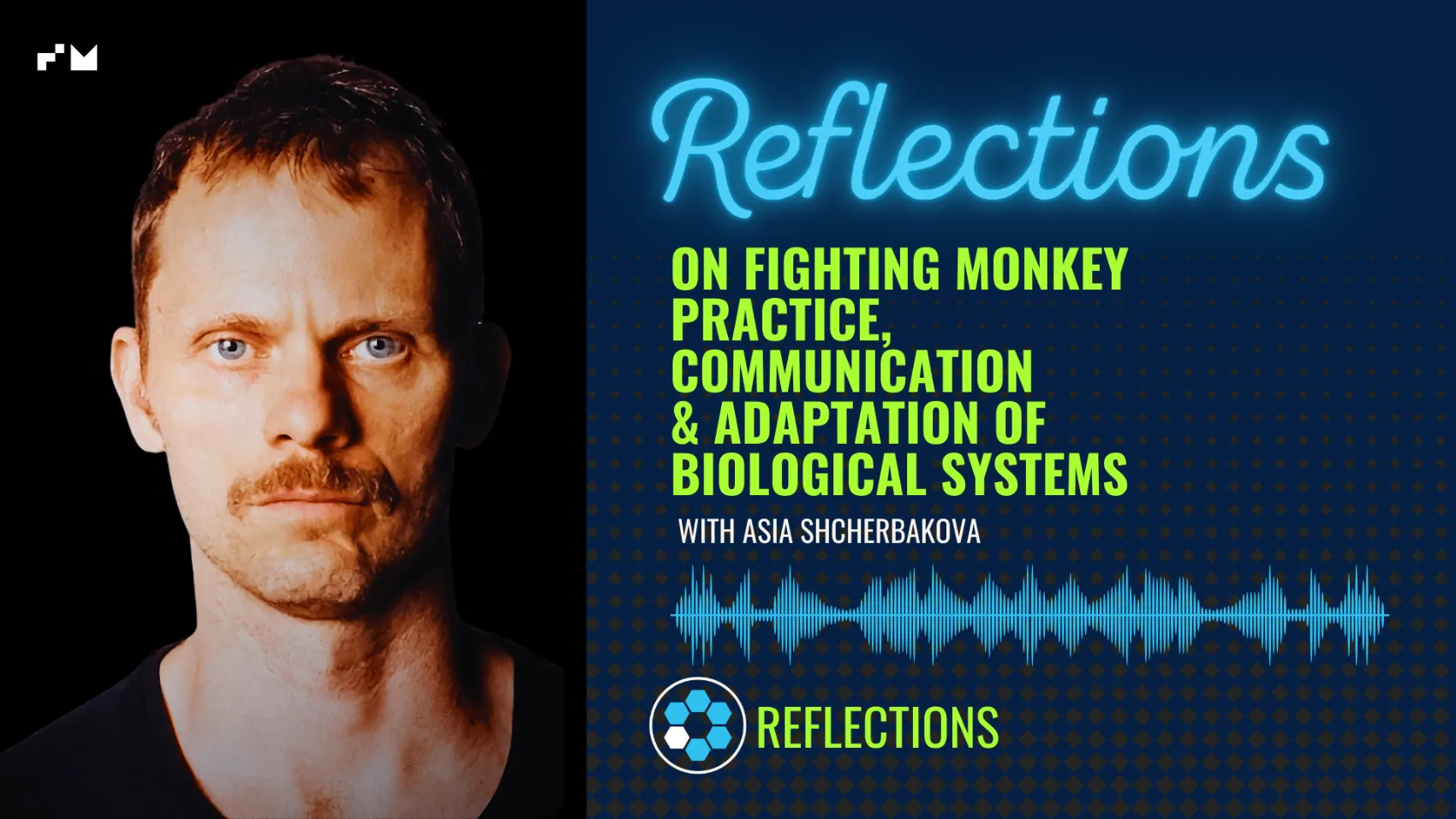In March 2024, we had an exciting opportunity to work with a group young musicians and their professors from the Autonomous University of Bucaramanga in Colombia. The focus was on the significance of body awareness and conscious movement for musicians.
During the planning for one of our lectures at UNAB, we were asked to design a program for the students of the music faculty. The program director, Vladimir Quesada Martínez, observed that despite the students’ technical skills, there was a noticeable lack in terms of stage presence, confidence, posture, and delivery.
Performance-Associated Musculoskeletal Pain in Professional Musicians
It is a known fact that musicians tend to suffer from chronic pain and tension due to the necessity to maintain specific postures for long durations. Many studies on professional musicians have reported alarming numbers, with between 80% and 97% having experienced musculoskeletal pain associated with performing in at least one part of the body. It’s worth noting that these issues can arise even among young musicians who are still in the learning phase.
Key Concerns of Music Students in Their Early 20s
To understand the main issues affecting our group of musicians at UNAB, we carried out a survey. The average age of the student group was 22 years old. This graph represents the survey results.
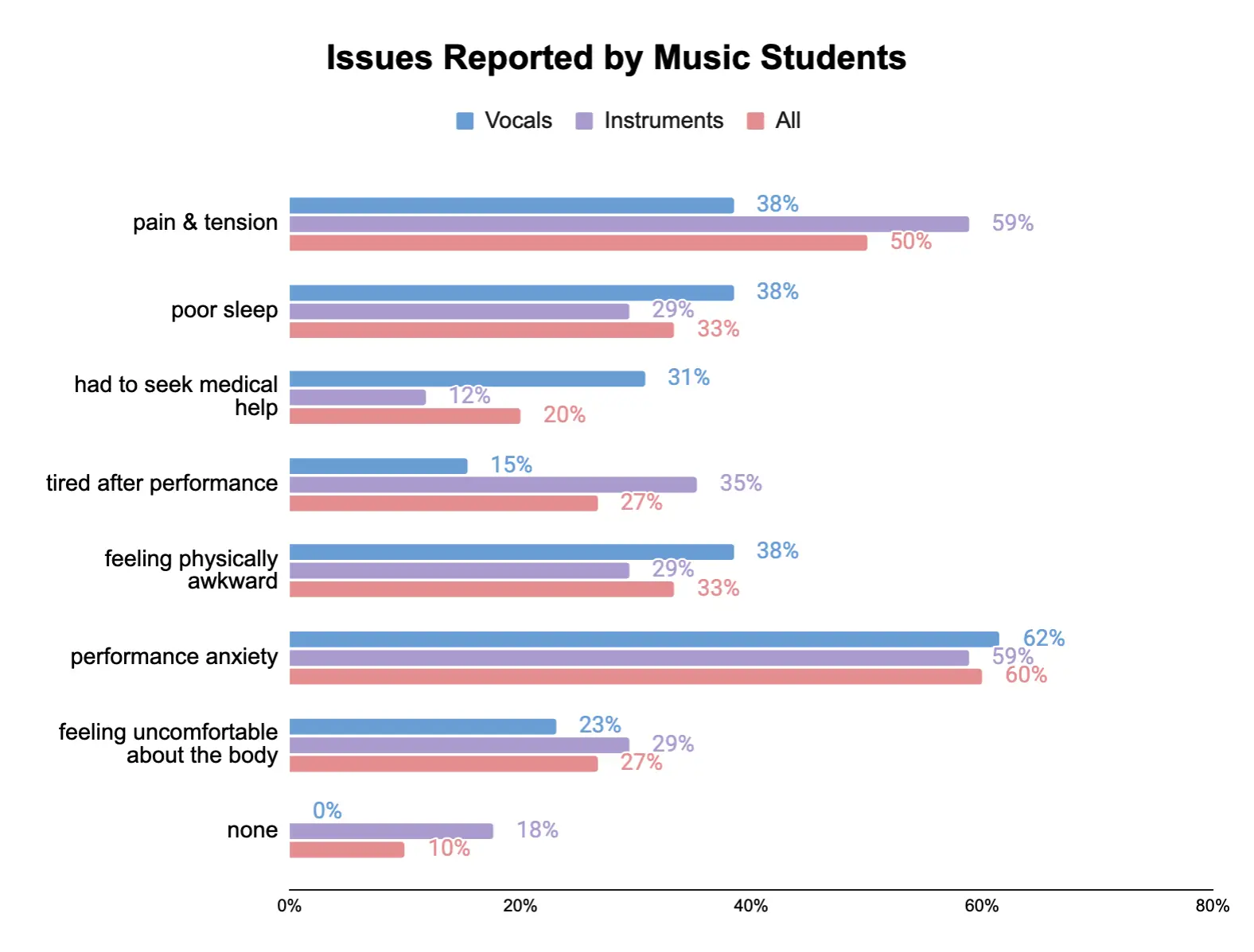
50% of all students reported experiencing pain and tension. The percentage was much higher for the instrument-playing students (59%) compared to those specializing in vocals. The prevalence of pain and tension among those playing instruments likely relates to the reality of the asymmetric posture introduced by the instrument.
Performance anxiety was another prevalent issue affecting a staggering 60% of the students. Additionally, poor sleep quality was reported by over 30% of students, and about 30% expressed general discomfort with their body. Only 10% of all students expressed no concerns.
Interestingly, there was no correlation between the reported amount of physical activity and the number of reported concerns. This suggests that increased exercise and activity don’t automatically translate to improved sleep quality or reduced tension and anxiety. This indirectly supports our argument- It’s not about what you do; it’s about how you do it.
Based on the survey data, we designed a 2-day program focusing primarily on tension release mechanisms, body awareness, spatial attention, and anxiety management.
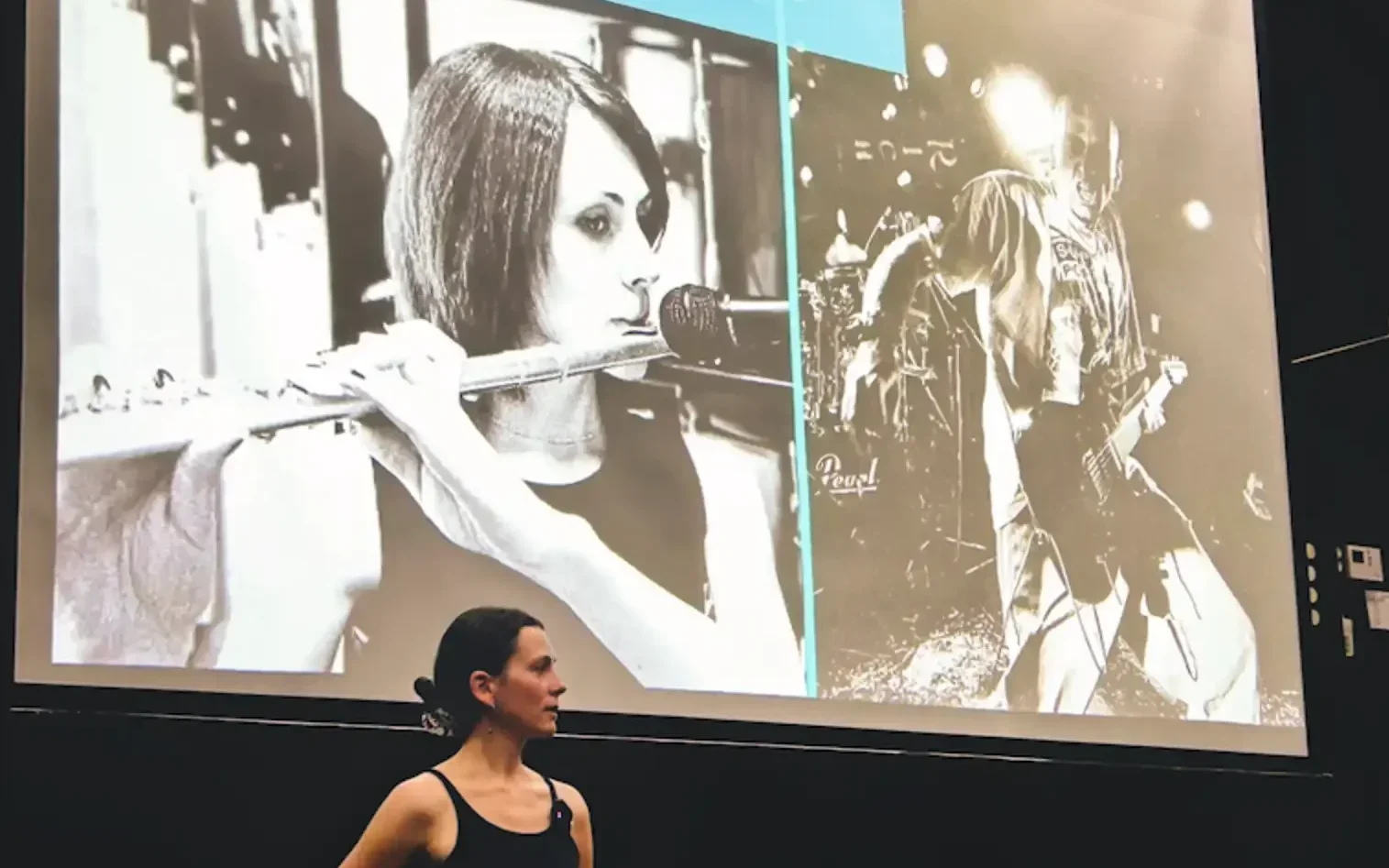
The Program
The UNAB music students were focused, interested, and actively engaged. As mentioned above, several of the professors of the music faculty also participated with the students.
Our program focused on various types of body awareness and how long periods spent in an asymmetrical position can alter the perception of the position of the body. We presented photographs for context, showing how a musician’s “relaxed posture” often mirrors a less pronounced “playing posture.” We discussed the importance of awareness and controlled muscular contraction to reset the memory of the posture held when playing an instrument and to find the baseline between playing. We also highlighted the impact of exhalation and inhalation on the autonomic nervous system underscoring the importance of extended controlled exhalations to achieve a calm state.
But most of the session focused on exercises to get an experiential understanding of the key Baseworks Movement Principles. Many elements of learning are laregely bottom-up – repeated performance of specific movements over and over again develop new patterns, However, the Baseworks Movement Principles also have a significant top-down aspect – once you understand the task, it completely changes how you move.
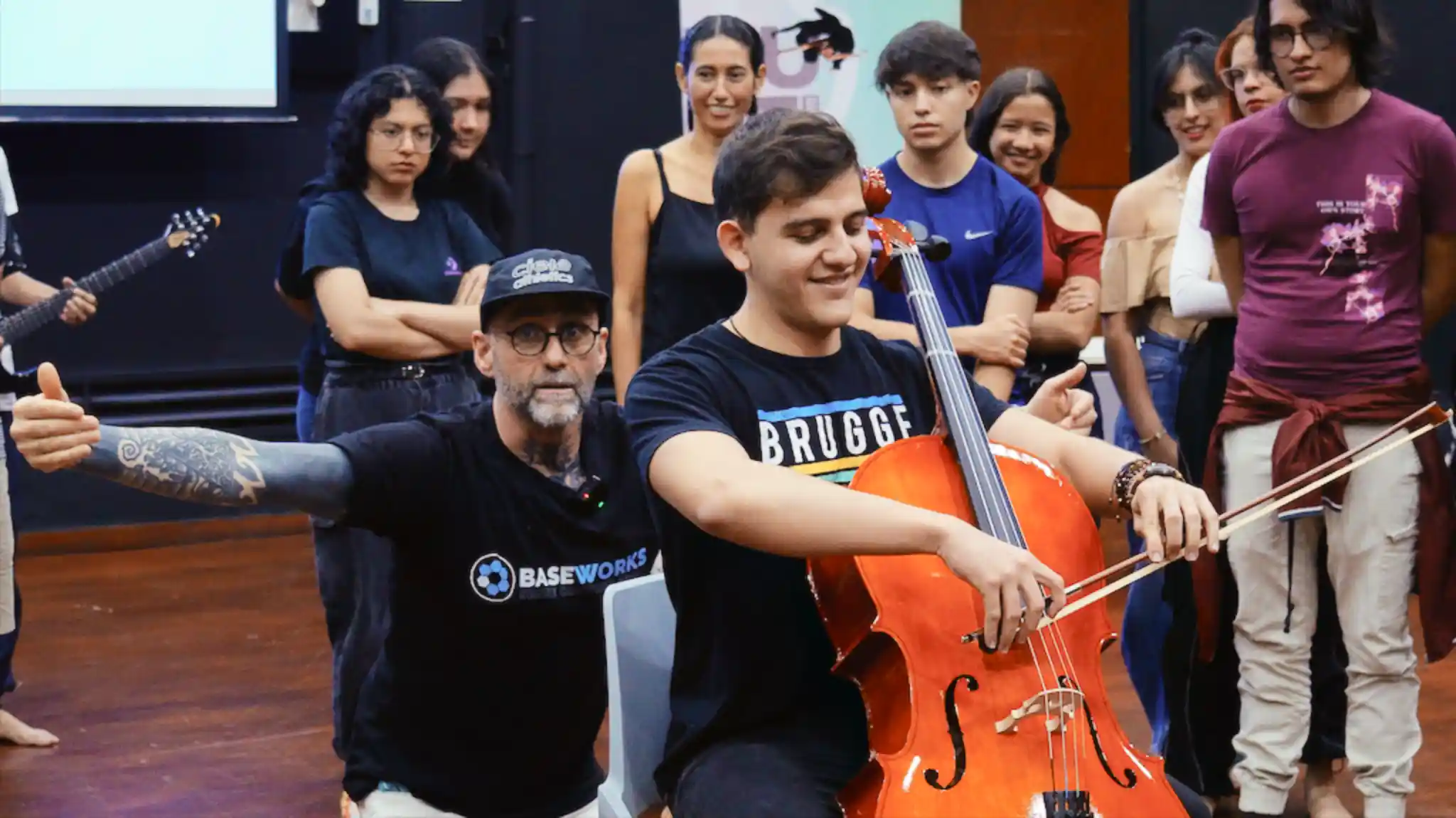
The Immediate Outcomes of Body Awareness Training in Musicians
After the intensive, we had a chance to talk to the students about their experiences. We also talked to the music faculty professors who noted the efficacy of the exercises we performed in building a sense of presence and connection with the body. They shared that these concepts are often discussed in singing and performance but are challenging to relay to those who have not yet grasped them experientially, expressing that Baseworks provided a practical and accessible approach to experiencing these ideas in a tangible way.
One of the guitar students had noticed:
It’s interesting that although musicians work with their bodies, many don’t have good body awareness.
Another student, who had done theatre and dance who had visibly quite good body awareness, mentioned:
Let’s say, if I compare the progress of other classmates who perhaps have not been exposed to or aware of all these principles that we practiced in the Baseworks workshop, there are certain weaknesses in what you were talking about – in body awareness. Many of us are not aware, even of the space itself, of the spatial dimensions, of the dimensions of the body, of the movements… And I have lived it in first person, and I know that it is very important to know what I am doing with my body when performing music, when I am standing on a stage, or simply talking.
He also added that although there is often a narrative about how people need to connect with the body and relax while playing,
…since I’ve been at the university, we’ve never had a workshop like this, with a well-designed foundational structure and a method for which we can utilize to look for those sensations in the body.
Another student, a vocalist, also commented:
Every day, we are always told about “connecting with the body”, or about trying some postures that can suddenly help us relax and so on. But I feel that Baseworks gathered all those ideas, organized them and gave them a specific form and principles that achieve those intentions that they tell us but we don’t have the awareness to do it well. So it is easier to go to Baseworks, to find all that information already condensed, organized in several principles and apply them. Because that way it is easier for us. It’s more understandable and more practical. Now it’s easier to think about the principles that we learned with you and be able to achieve those intentions of embodiment, breath awareness and so on.
Many students told us that they noticed changes in their daily experience and performance right from after the workshop.
Guillermo, a guitar student mentioned:
Paying attention to how I move, even the small movements, made me notice how balanced and symmetrical my body can be. Now when I sit down I tell myself, I’m going to try to be more meticulous in how I express myself through my body.
Nicolle, a flutist and vocalist mentioned:
As a flute player and singer, I learnt to focus more on my posture before and while I perform. Before I used to pay attention only to my flute, its technique and sounds. So, this experience was really helpful because it made me more aware of myself and my body. This awareness improved my sound and confidence on stage.
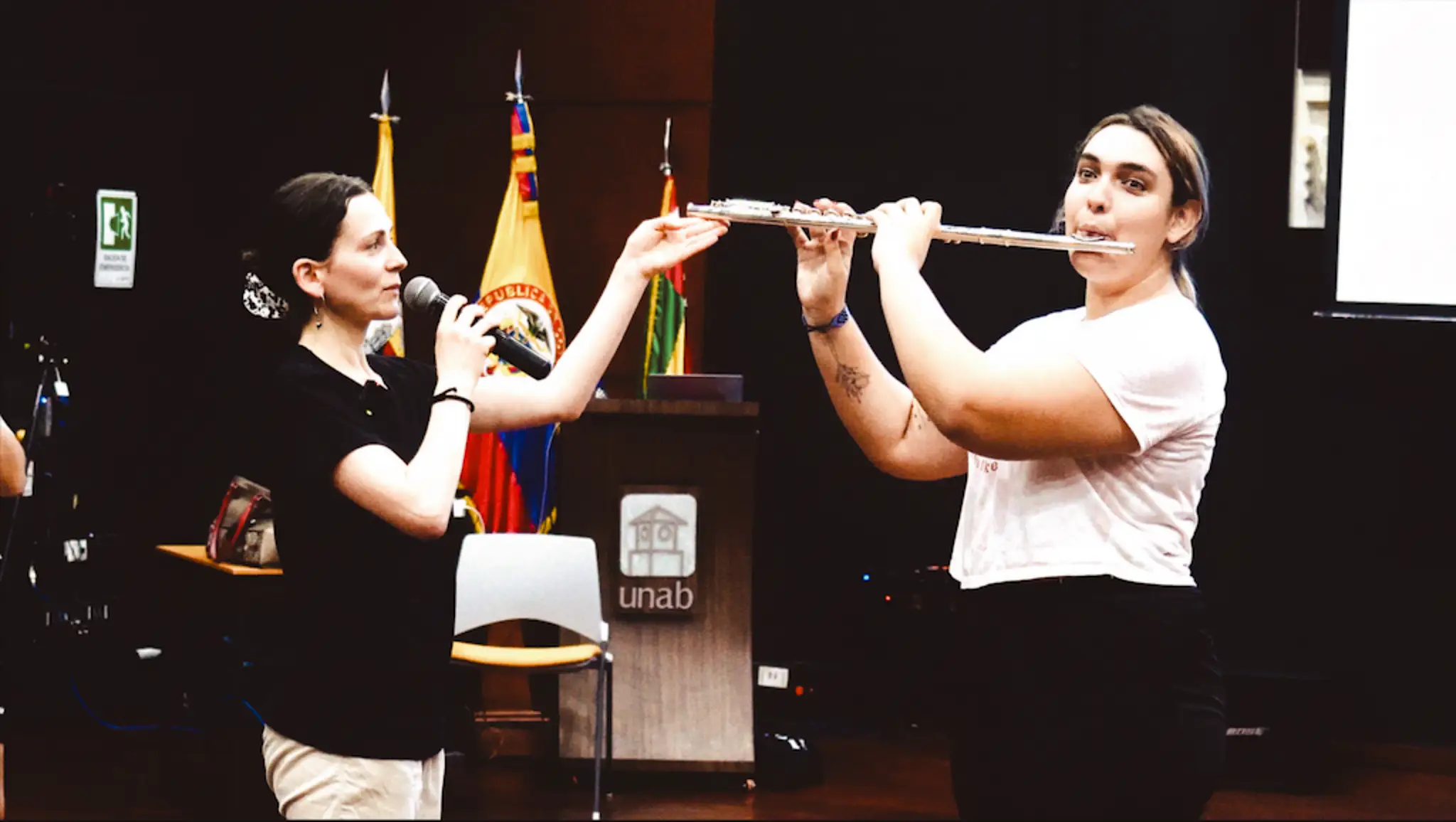
Andrea, a pianist explained her experience like this:
After those practice days, I was continuously reminding myself to lower my shoulders while playing my instrument. When my shoulders are raised, I feel a building tension that restricts the movement of my fingers. But when I drop my shoulders, my entire arm, shoulder, and back feel relaxed. This relaxation allows my fingers to move fluidly when playing, in contrast to when my shoulders are raised. Even though the workshop was only two days, the principles stayed with me and that I know I’ll use them in the future with my instrument.
Sofia, a vocalist, explained that the technique of “drawing the shoulders down” in combination with the principle of “Distributed Activation” (which involves staying connected without tension) alters the performance experience.
She describes her “before” state like this:
I experienced discomfort and pain related to tension while singing. I often felt tension in my shoulders and occasionally experienced back pain, which was terrible for me because I wasn’t enjoying singing.
And this is how she describes the experience of singing with the quality transferred from “Distributed Activation”:
As I engage my whole body and utilize all my muscles during performance, I can deliver a performance without experiencing pain or tension. Because I kept a constant awareness of everything that was happening in my body, this technique allowed me to avoid feeling stressed, tense, or tight after performance, and instead left me feeling calm and relaxed.
We also talked to the music faculty professors. Renowned in Colombia for her work teaching music to deaf children, vocal professor at UNAB, Luz Helena Penaranda Lopez, shared that she found Baseworks complete and its techniques reaffirming what’s important in vocal training and performance.
We also had a thought-provoking discussion with composer Adolfo Enrique Hernández Torres about the connection between spatial awareness and musical improvisation. He observed that individuals more skilled in dance improvisation with higher spatial abilities, seemed to be more creative in musical improvisation as well. Throughout our conversation, we exchanged observations and preliminary ideas about the potential reasons behind this correlation.
Afterthoughts
This was the first time for us to test our new wave of programming with a large group of people in their 20s.
We’re really grateful to UNAB for bringing us together with this crowd and to Maria Lucia Agon Ramirez from Mukti Espacio Vivo for making the connection. The participants were really were engaged and responsive and did exactly what we hoped—they grasped the principles and started applying them to their activities right away. While certain aspects of perception and action take time and training to develop, certain aspects can be changed instantaneously just by adjusting our intention, and it can be very powerful, especially when it significantly changes your performance or daily experience.
When asked whether she thought that Baseworks techniques were useful for singing, Sofia said:
Of course. Not only for singing but for day to day life, for speaking in public, for absolutely everything.
The positive reception of the workshop at UNAB and the valuable time we spent with the music students and their professors have reinforced our conviction that perception- and intention-modifying training modalities like the Baseworks Method can significantly benefit those engaged in the creative arts and younger audiences in general.



